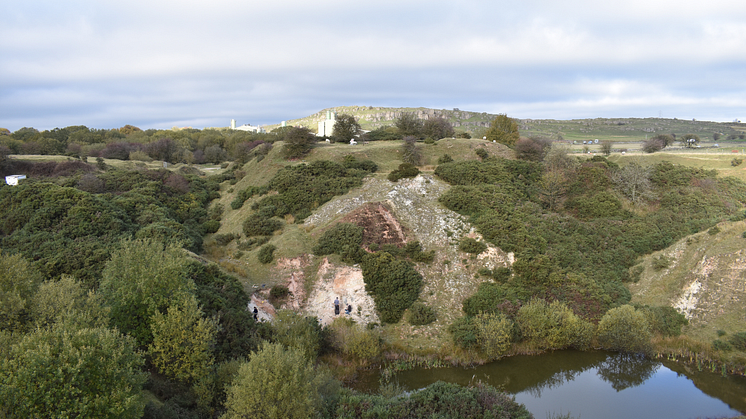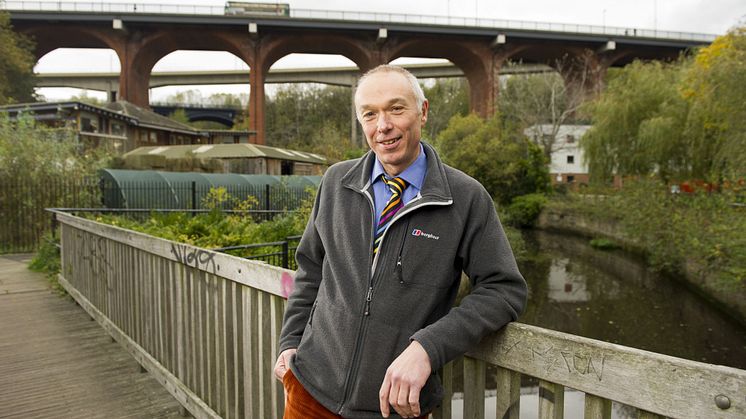
Press release -
Derbyshire fossil study reveals insights into Peak District’s 12 million year-old climatic past
A decade-long study into unique rocks near a Derbyshire village has been uncovering the secrets of what the county and the Peak District might have looked like under a much warmer and wetter past.
Although first studied over 10 years ago, the most recent investigation into geological deposits near Brassington was initiated in 2019, with an international team of researchers from Northumbria University, the British Geological Survey, Morehead State University in the USA and CONICET in Argentina now assessing their latest findings.
The complex techniques used can analyse the fossil pollen of plants and spores of fungi captured within the rock layer, helping to form a picture of past habitats and reconstruct likely climatic conditions far beyond our most recent understanding of the Peak District.
With plants and fungi generally favouring particular conditions, researchers are able to determine what the environment may have looked like some 12 million years ago.
The results and insights are unique to the study location in Derbyshire, as there are no other rocks of a similar age anywhere else in the UK.
Gaining similar understanding to life and climate in Europe so far back would likely require analysis of rocks from Germany or the Netherlands and then assuming these were the same for Derbyshire and the Peak District.
The results from the Derbyshire site and similar studies have gone on to suggest that the UK may get wetter with climate change. Today Derbyshire has a mean annual temperature of around 8°C with up to 1000mm of rain a year, 12 million years ago it was 12-18°C with 1200-1400mm of rain. This doubling of temperature was with atmospheric carbon dioxide levels similar to those predicted for 2060. These differences in temperature and rainfall would fundamentally change the entire landscape. This highlights how important carbon capture is to avoid extreme changes in climate.
With some of the most extensive upland landscapes and peat bogs in the UK and globally, the Peak District is already at the forefront of carbon capture or ‘sequestration’ through conservation management and restoration programmes, but also has a role to play in mitigating the potential localised impacts of climate change through natural flood management.
Dr. Matthew Pound from Northumbria University, which was behind the study, said: “Fossil plants and fungi can tell us a lot about a place – even from 12 million years ago. That’s why when choosing a nice sunny holiday you’d always pick palm trees over Christmas trees, and why I always end up with green tomatoes in the north of England! The study suggests an anticipated warmer climate for the UK and therefore a wetter UK, which of course has implications for all of us; but also provides an opportunity to ensure landscapes like the Peak District and Derbyshire can be part of that resilience, not just for local communities but at scale as we manage the carbon in our environment.”
Anna Badcock, Team Leader for Cultural Heritage at the Peak District National Park added:
“This work is incredibly powerful in helping us communicate ideas about landscape change. Researchers use fossil pollen for reconstructing past environments and understanding human impacts on landscape, but this is recent in geological terms. It’s wonderful that advances in this kind of analysis can also be used to help us understand climate and environments millions of years ago – we still have such an extraordinary amount to learn from fungi and plants, and about how our environments adapt.”
Chris Dean, Head of Moors for the Future Partnership based in the Peak District National Park added: “This study shows how our climate is changing, and with that comes an increased risk of flooding as we see more frequent extreme storm events. Moorland restoration and effective natural flood management strategies, such as planting sphagnum moss and blocking gullies to slow the flow of rainfall to the valleys, have never been more important.”
Topics
Northumbria is a research-intensive modern university with a global reputation for academic excellence. Find out more about us at www.northumbria.ac.uk --- Please contact our Media and Communications team at media.communications@northumbria.ac.uk with any media enquiries or interview requests ---











